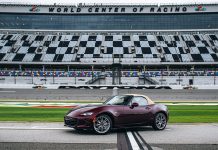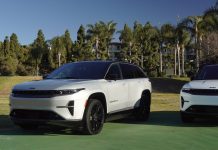Borrowing a GM platform means being stuck with some of GM’s design decisions.
Jonathan M. Gitlin – 8/9/2024, 3:00 AM
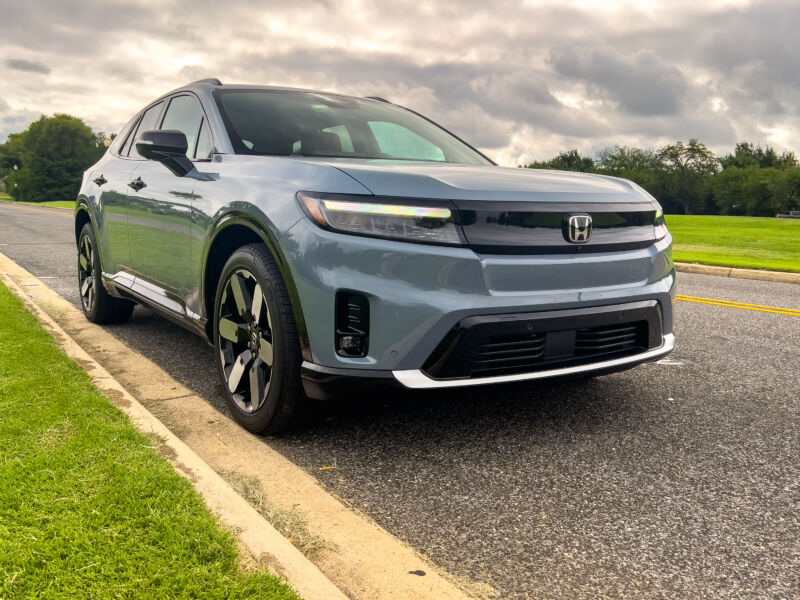
Electric vehicles aren’t quite as hot as they were when Honda first showed us the Prologue in 2022. Designed around General Motors’ new platform of Ultium batteries and motors, it was planned to be the first in a series of EVs to benefit from this platform-sharing with GM. But late last year, that plan was shelved. Instead, Honda will focus on a homegrown family of EVs, investing $11 billion on North American production alone. That makes the Prologue rather accurately named, but it’s also something of a dead end, as it’s built on an underlying architecture that won’t be seen again wearing the Honda wings.
The Prologue is a midsize SUV, so it’s larger than a CR-V. It’s identical in size to the Chevrolet Blazer, and the twin-motor all-wheel drive powertrain in our test Prologue Elite generates the same 288 hp (214 kW) and 333 lb-ft (451 Nm), fed by the same 85 kWh capacity Ultium battery pack.
That shouldn’t be too surprising—the Prologue comes from the same GM factory in Ramos Arizpe, Mexico, as the Blazer EV. But Honda was responsible for signing off on the ride and handling and, as with the more upmarket Acura ZDX, also took charge of the car’s UI/UX. And the result is an EV that does not feel like a Blazer EV to drive, nor to sit in, mostly.
At 5,273 lbs (2,392 kg), the Prologue is not a light car, but it still manages to weigh less than either the AWD Blazer EV or the (remarkably heavy) Acura ZDX. There’s no option for air springs on the Prologue, even on the top-trim Elite, but the conventional springs and dampers in the multilink suspension did a notably better job of filtering out harshness from the road than the Blazer EVs I drove last December.
- The Prologue is 192 inches (4,877 mm) long, 78.3 inches (1,989 mm) wide, and 65.2 inches (1,656 mm) tall. Jonathan Gitlin
- It’s the best-looking Ultium-based car I’ve seen so far. It also got the thumbs up from at least one motorist during the week—a young man and his dog out for a drive in a late-’90s Jaguar XJR, which is not the sort of thing you forget. Jonathan Gitlin
- You can use a foot gesture to open the rear hatch, which is actually quite useful if you have arms full of groceries. Jonathan Gitlin
- There are physical buttons and knobs for the climate control, just not the headlights. Jonathan Gitlin
- The floor is completely flat, and there’s quite a lot of room for passengers back here. Jonathan Gitlin
- The Prologue is 192 inches (4,877 mm) long, 78.3 inches (1,989 mm) wide, and between 64.7-65.2 inches (1,643-1,656 mm) tall, depending on trim. Jonathan Gitlin



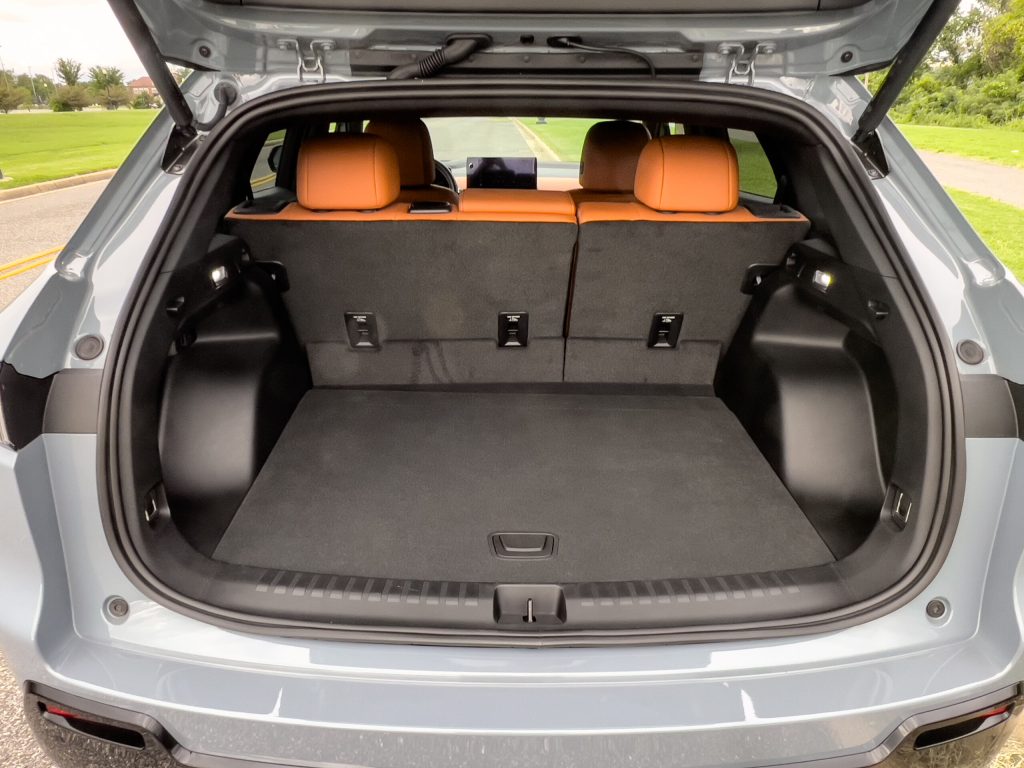
I’m not sure Honda has even published a 0–60 figure in its tech specs for the Prologue, and despite telling us that the car has “sporty Honda driving character,” I didn’t find any of that evident during our week with the car. You’ll want to make sure there’s a good gap in traffic before pulling out from a side street to make a left turn, given its rate of acceleration. And as you approach full throttle, the front wheels start to torque-steer thanks to tires that prioritize low rolling resistance over lateral grip.
Ars Video
How The Callisto Protocol’s Team Designed Its Terrifying, Immersive Audio
On the other hand, I found the Prologue a pleasant car to drive slowly, despite it being on the larger side of things. The steering was smooth and responsive, and in its strongest setting, the one-pedal driving mode was very well-calibrated for the 20–30 mph (32–48 km/h) speed zone that covers most city driving these days.
The Prologue’s infotainment made it near-impossible to get a good idea of long-term range efficiency, resetting its display with each journey. In the height of the hottest summer on record here in DC, at least 20 percent of each trip’s energy use was devoted to running the air conditioning, and between that and the 21-inch wheels and all-wheel drive powertrain of the Elite trim, the best I saw displayed was 3 miles/kWh (20.7 kWh/100 km).
The Elite has the shortest EPA range of all the Prologue trims at 273 miles (439 km). But all of them can fast-charge at the same speed, taking 35 minutes to get from 20 to 80 percent. During charging, the Prologue maintained a relatively high rate across the entire 35 minutes rather than tapering off rapidly, as is common with earlier EVs.
- A DC fast charge should only take 35 minutes to hit 80 percent. Jonathan Gitlin
- EA chargers now tell you how much power the car is requesting as well as how much power the charger is feeding it. Jonathan Gitlin
The pitfalls of platform sharing
Enabling one-pedal driving highlighted a pitfall of using someone else’s platform to build your car, in that you can be stuck with questionable design decisions baked in. In this case, GM’s Ultium platform has relegated the headlight and one-pedal driving settings to the infotainment touchscreen.
Instead of using the drive select stalk behind the wheel to toggle between D and B as you might in the Bolt or a switch on the center console as found in most Hondas, your target in the Prologue is the little foot icon that is always found near the top-left corner of the touchscreen.
I’m less annoyed by the decision to move the headlight controls there, as these can be set to automatic and then left to their own devices. But I often want to switch one-pedal driving on or off during a journey, depending upon my route, and aiming for a small target on a touchscreen to do that is far from ideal. Here’s hoping that Honda’s engineers decide to do things better with the in-house EV platform they are currently developing, due in 2026.
In fact, there’s still some regenerative braking, and therefore drag, even with one-pedal driving set completely to “off,” so the Prologue will not coast along a level stretch of highway as effortlessly as some other EVs.
- The icons at the top of the screen are where you go to toggle the headlights and one-pedal driving. Jonathan Gitlin
- The trip computer wasn’t the most informative in terms of long-term efficiency. Jonathan Gitlin
- Google Maps is built-in. Jonathan Gitlin
- But you can cast Apple Maps to the main instrument panel. Jonathan Gitlin
- Irritatingly, the car would forget which satellite radio station it was tuned to on startup, but inconsistently. Jonathan Gitlin
- Be the envy of all Chevy Blazer EV drivers. Jonathan Gitlin
- If you use the onboard nav to find a charger, it will preheat the battery for you. Jonathan Gitlin
- Native apps live here. Jonathan Gitlin
- A look at the Google Play Store for AAOS. Jonathan Gitlin
- More apps in the AAOS App Store. Jonathan Gitlin

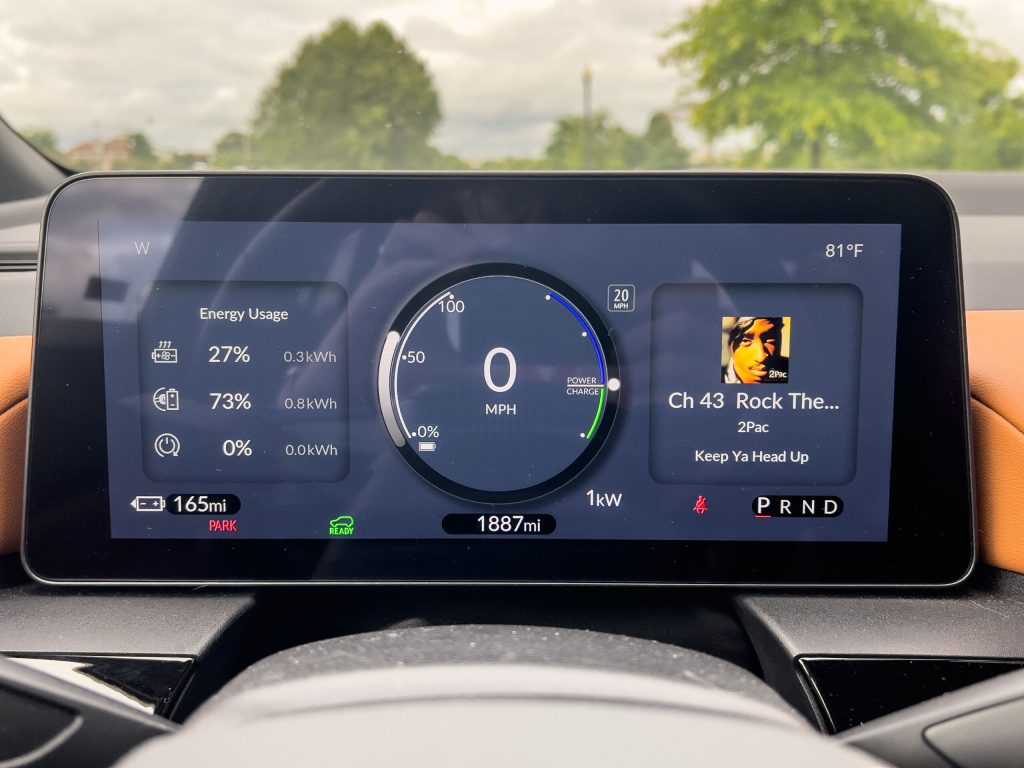

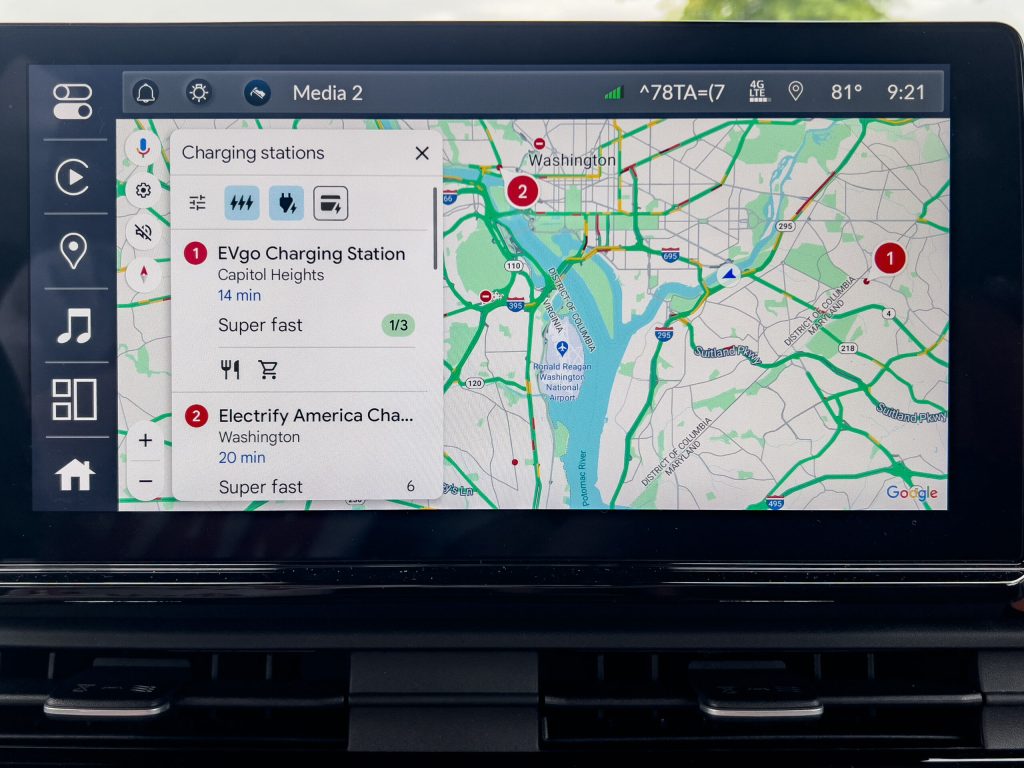
Then again, Honda was not constrained by all of GM’s decisions, which is why you will find Apple CarPlay and Android Auto both available if you connect your smartphone to the Android Automotive OS-based infotainment system. The CarPlay integration includes showing you turn-by-turn directions from Apple Maps in the heads-up display and Apple Maps as an alternative to Google Maps on the main instrument display in front of the driver.
There are reasons to stick with the built-in version of Google Maps—if you select a fast charger as your destination in the native navigation app, it preconditions the battery pack for better DC fast charging. As convenient as a phone-casting interface is, that deep of a hook into the car’s powertrain is unlikely to ever be something an automaker is OK with enabling from a third-party device.
Brake!!!
One thing that definitely lets you know you’re in a Honda is the car’s forward collision warning. For reasons that have never really been explained, the brand has always had perhaps the jumpiest collision warning system—you can expect at least a couple of false positive warnings even on a short drive. The Acura ZDX did that, too, but GM’s Ultium EVs don’t, so it’s an interesting example of what does and doesn’t make the cut when porting your brand over to another company’s platform.
All trim levels of the Prologue get a standard suite of advanced driver assists on top of collision warning, including automatic emergency braking with pedestrian detection, blind spot monitoring, and rear cross-traffic alerts. There’s also adaptive cruise control and lane keeping as standard, but there’s no option for Super Cruise, even on the Elite trim.
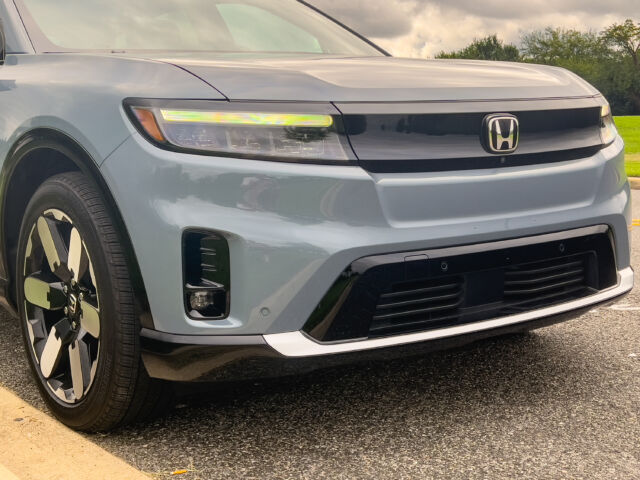
At $57,900 plus a delivery charge (but before the $7,500 clean vehicle tax credit), the Elite is not exactly cheap, and if my research is correct, it’s about $4,000 more expensive than the all-wheel drive Blazer EV, which is a pretty premium to pay for CarPlay. But you also get much more restrained exterior and interior styling with the Honda, which at no point reminded me of a gaming PC.
The cheaper trims represent better value—with the tax credit, the single-motor Prologue EX should cost less than $42,000, and it will go 24 miles (39 km) longer on a single charge, too. For that, you’ll get a dependable family SUV, but it won’t be the most exciting EV you put on your driveway.

